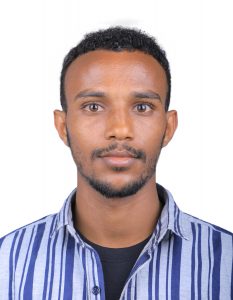News
Student positions
If you are interested in working with us, we have bachelor, master and PhD positions available:
PhD
Emisné účinné prierezy relevantné pre astrofyziku
Study of excitation processes in molecules induced by electron impact
Master
Disociácia zlúčenín nárazom elektrónov
Štúdium elektrón-molekulových excitačných reakcií
Bachelor
Štúdium excitácie molekúl metódou skrížených zväzkov
Research
The LEIF research is aimed at studying excitation reactions of electrons with molecules by analysis of photon emission of the deexciting species. Such processes are abundant in many environments from laboratory and industry (electrical discharges, plasmas) to atmospheres of planets (aurora borealis, lightnings, upper atmosphere processes) and space (stars, nebulae, comet comae, …). The experiment provides reference data for evaluation of emission spectra of these natural phenomena and laboratory/industrial light sources and provides basic data on electron-molecule collisions such as reaction kinetics and cross sections.
Experiment
The experiments performed in the LEIF are based on crossed beams of electrons and molecules in the vacuum. The electron beam is generated by an electron gun, trochoidal electron monochromator or hemispherical electron monochromator and the molecular beam of ambient or slightly elevated temperature is formed by effusive capillary. These collide in the reaction chamber at low pressures ensuring single collision conditions where various excited species are generated. The photons emitted during their deexcitation are guided by the optical system out of the vacuum chamber into one of the optical monochromators (0.25m Czerny-Turner or 1.5m Czerny-Turner) or into the vacuum UV 1m monochromator. The selected photons are then collected by the photomultiplier tube or state of the art CCD camera working in the photon counting regime. The experimental setup provides outstanding sensitivity allowing detection of very weak processes.
The main output of the experiments are emission spectra of the studied compounds at various electron impact energies which can form a unique 3D emission spectrum or 2D emission map (see figs.). Their intensity can be calibrated to absolute scale so the emission cross-sections of all detected reactions can be determined for any electron energy within the experimental range.
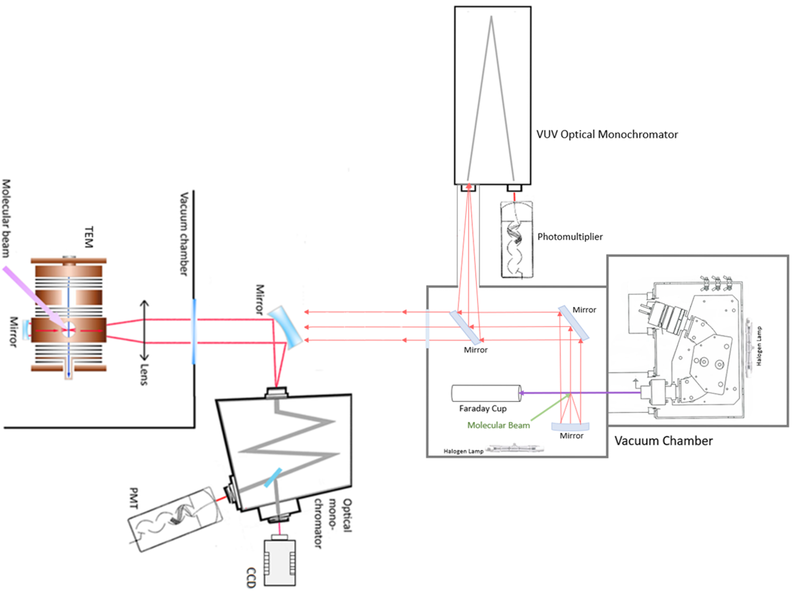
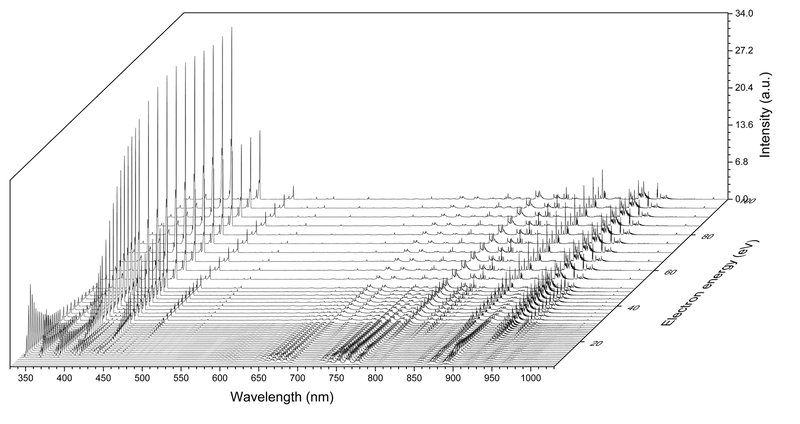
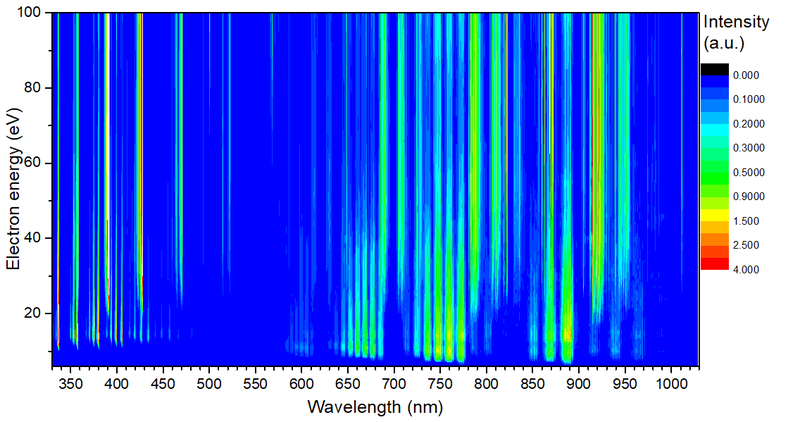
Team members
Doc. RNDr. Juraj Országh, PhD.
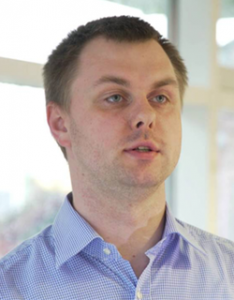
Research interest: low-energy electron-molecule collisions, emission spectroscopy
Fulbright Scholar – Auburn University, Alabama, USA (2024)
Sciex Postdoc Fellow – EMPA, Thun, Switzerland (2014 – 2015)
PhD in Physics – Comenius University in Bratislava (2006 – 2009)
MSc – Comenius University in Bratislava (2006)
RNDr. Barbora Stachová
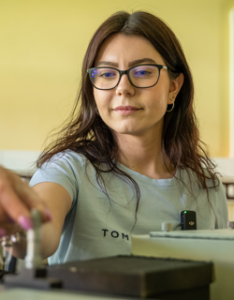
Research interest: emission spectroscopy of compounds relevant for astrophysics
PhD in Physics – Comenius University in Bratislava (2021 –
RNDr – Comenius University in Bratislava (2024)
MSc – Comenius University in Bratislava (2021)
MSc. Enmily Loelbis Garcia Angulo
Research interest: electron-molecule emission cross sections of compounds relevant for astrophysics
PhD in Physics – Comenius University in Bratislava (2023 –
MSc – Moscow Institute of Physics and Technology (2018)
MSc. Gadisa Deme Megersa
Research interest: electron-molecule interactions leading to excited products
PhD in Physics – Comenius University in Bratislava (2024 –
MSc – Adama Science and Technlogy University (2018)
Former Team Members
Mgr. Ján Blaško, PhD.
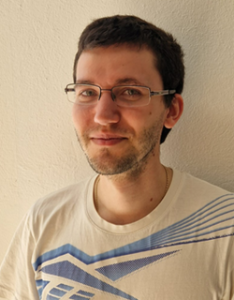
Research interest: electron-impact excitation of nitrogen containing compounds
PhD in Physics – Comenius University in Bratislava (2019 – 2023)
MSc – Comenius University in Bratislava (2019)
Mgr. Anita Ribar, PhD.
Research interest: inelastic electron-impact collisions
PhD in Physics – Comenius University in Bratislava (2013 – 2017)
MSc – Comenius University in Bratislava (2013)
Mgr. Marián Danko, PhD.
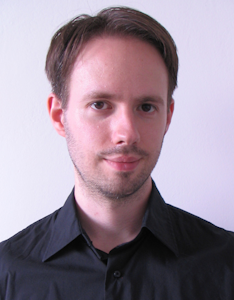
Research interest: electron-impact excitation of small hydrocarbons
PhD in Physics – Comenius University in Bratislava (2010 – 2014)
MSc – Comenius University in Bratislava (2010)
Publications
Contact
Doc. RNDr. Juraj Országh, PhD.
e-mail: juraj.orszagh(at)uniba.sk
Phone Nr.: +421 2 602 95 398
Prof. Dr. Štefan Matejčík, DrSc.
e-mail: matejcik(at)fmph.uniba.sk
Phone Nr: +421 2 602 95 686
Collaborations
Prof. Dennis Bodewits, Auburn University, Alabama, USA www
Prof. Nigel Mason, University of Kent, Canterbury, United Kingdom www
Dr. Juraj Fedor & Dr. Pamir Nag, J. Heyrovský Institute of Physical Chemistry, CAS, Prague, Czech Republic www
Dr hab. Mateusz Zawadski, Gdańsk University of Technology, Poland www
Research Projects
This project has received funding from the European Union’s Horizon 2020 research and innovation programme under grant agreement No 871149.
Achievement of Excellence in Electron Processes for Future Technologies – ELEvaTE ID: 692335
EU Horizon 2020 – H2020-TWINN-2015

A MULTIDISCIPLINARY APPROACH TO UNRAVEL PHOTON AND ELECTRON PROCESSES AND THEIR INTERACTION WITH THE COMA OF 67P/CHURYUMOV-GERASIMENKO
NASA ROSES NNH18ZDA001N-RDAP
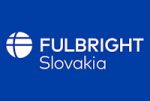
ELECTRON IMPACT INDUCED PROCESSES IN COMETS AND SMALL BODIES IN THE SOLAR SYSTEM
J. William Fulbright Commission for Educational Exchange in the Slovak Republic – Fulbright Visiting Scholar Program AY24-25

- Plazmové metódy pre detekciu a degradáciu pesticídov, APVV-23-0522
- Comets‘ Organic Studies: Exploring the Mechanisms of Electron-Induced Chemistry – Joint Experimental and Theoretical Approach, APVV SK-PL-23-0050
- Iónové a elektrónové procesy pre pokročilé spektrometrické metódy, APVV-19-0386
- Interakcie elektrónov a iónov s molekulami a ich aplikácie v oblasti analytických a diagnostických metód, APVV-15-0580
- Kinetika elektrónových a iónových procesov pre fúznu plazmu a elektrické výboje, APVV-0733-11
VEGA
- Štúdium reakcií elektrónov a iónov s molekulami predstavujúcimi environmentálnu záťaž s využitím pokročilých spektrometrických metód, VEGA 1/0553/22
- cŠtúdium exitačných zrážok elektrónov s molekulami astrofyzikálneho významu, VEGA 1/0489/21
Next Generation EU
The LEIF is Funded by the EU NextGenerationEU through the Recovery and Resilience Plan for Slovakia under the project No. 09I01-03-V04-00047
